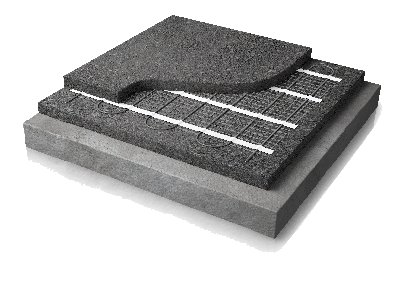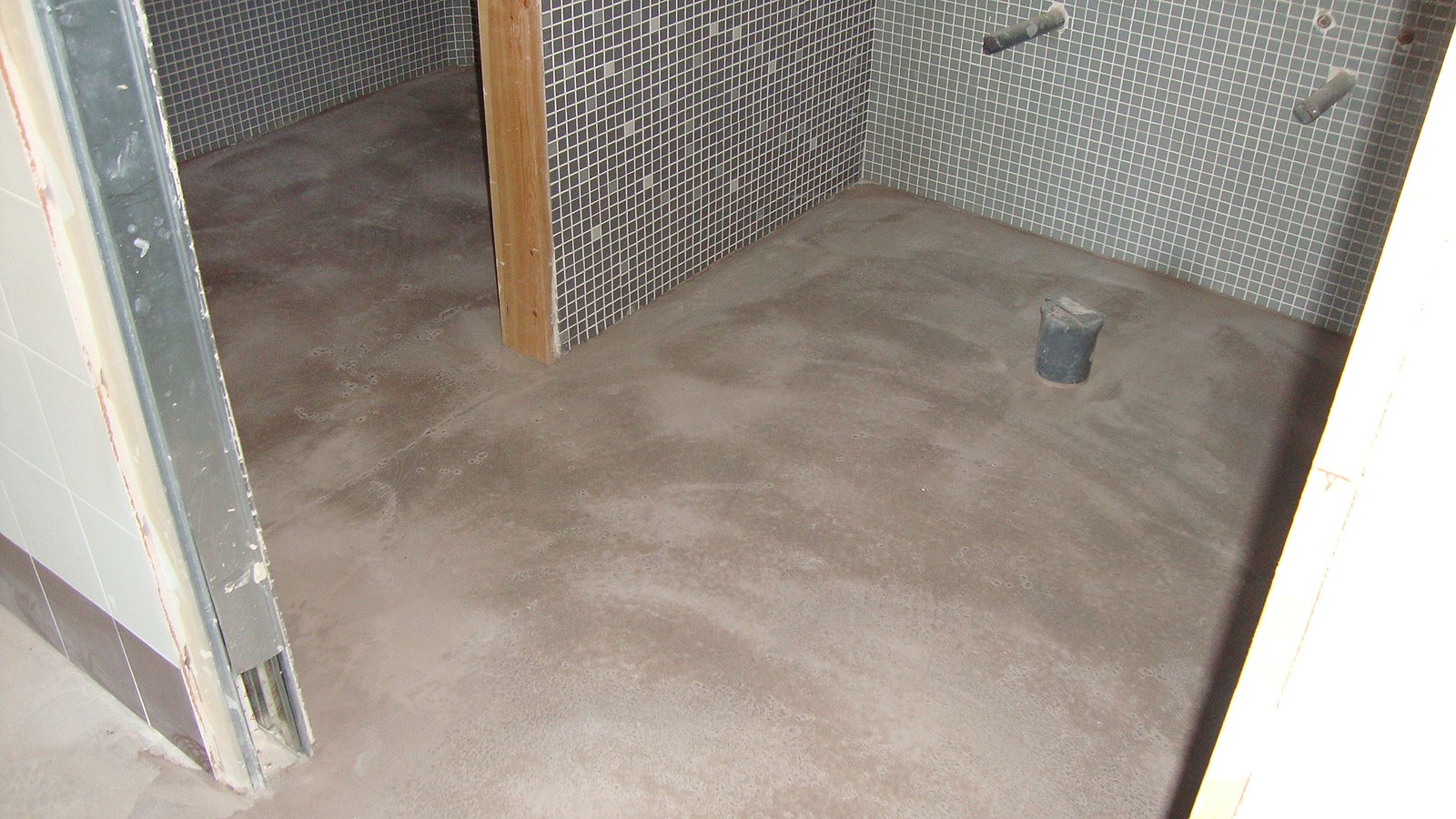As winter sets in, Massachusetts homeowners brace themselves for the arduous task of snow removal from their driveways. Yet, technological advancements now offer an efficient and effective solution: the heated driveway. This article will consider why the heated driveway is a game-changer for Massachusetts homeowners, by addressing many of the issues they face during the cold months.

The Challenge of the Massachusetts Winter
Winter in Massachusetts isn’t just about picturesque snowfalls. For homeowners, it often means spending hours:
- Shoveling snow off driveways
- Struggling with icy patches
- Grappling with the potential damage caused by winter’s wrath
Potential Damage Caused by Snow and Ice Accumulation on Driveways
Accumulating snow and ice on driveways in Massachusetts can lead to a range of damages:
Freeze-Thaw Cycles
When snow and ice melt during the day and refreeze at night, they expand within the cracks and pores of driveways. This expansion can enlarge existing cracks and create new ones.
Potholes
Repeated freeze-thaw cycles can weaken the driveway’s material, which can lead to the formation of potholes over time.
Surface Erosion
Melting snow and ice can erode the surface layer of driveways, especially if they are made of asphalt or concrete, which can lead to a rough and uneven surface.
Water Infiltration
As snow and ice melt, the water can seep into the sublayers of the driveway. If the water then freezes, it can cause heaving and displacement of the driveway material.
Salt and Chemical Damage
Often, homeowners use de-icing chemicals or salt to melt the ice. These can corrode the driveway materials, especially concrete, which can lead to surface scaling and degradation.
Safety Hazard
Beyond material damage, ice patches can create slippery zones that can pose a risk of slips and falls for individuals.
Over time, these types of damages can compromise the structural integrity of the driveway, and may necessitate expensive repairs or complete replacements. Rather than responding to the aftermath, why not prevent the issues altogether?
Enter the heated driveway – an innovative solution to Massachusetts’ snowy challenges.
Unveiling Heated Driveways
What Are Heated Driveways and How Do They Work?
Simply put, heated driveways are embedded systems that melt snow and ice on contact to keep your driveway clear and safe. Depending on the type, they utilize either liquid or electric heating elements beneath the driveway’s surface to provide warmth.
Types of Heated Driveway Systems: Hydronic and Electric
The hydronic system circulates a mixture of water and antifreeze through tubing beneath the driveway. Electric systems, on the other hand, utilize electric coils. While both are effective, they offer different advantages regarding installation, operating costs, and maintenance.
Advantages of Heated Driveways Beyond Snow Melting
Beyond the obvious snow melting benefit, heated driveways prevent water infiltration and the subsequent freeze-thaw damage, thus increasing the lifespan of your driveway. Plus, there’s the added advantage of enhancing property value.
Benefits of Heated Driveways for Massachusetts Homeowners
Effortless Snow Removal
Gone are the days of strenuous shoveling. With heated driveways, snow and ice melt on contact to render snow blowers and shovels obsolete. Imagine waking up to a clear driveway after a snowstorm!
Enhanced Safety and Reduced Liability
Reduced icy patches mean fewer falls, accidents, and potential liability issues. Your driveway will be safe and navigable even in the harshest conditions.
Extending the Lifespan of Driveways
With the elimination of freeze-thaw cycles, your driveway remains in pristine condition for longer, to save you costly repair and maintenance in the long run.
Time and Energy Savings
Consider the hours saved not having to shovel snow. There is also an energy savings from not using snow blowers or other removal methods.
Selecting the Right Heated Driveway System
When considering a heated driveway system, homeowners are often faced with two primary choices: hydronic and electric systems. While both have their merits, electric systems stand out for their efficiency, ease of installation, and lower maintenance requirements. As technological advancements continue to favor electric solutions, many experts believe they offer a superior, long-term choice for homeowners seeking both reliability and convenience in their driveway heating solutions.
For insights and practical demonstrations, check out this informative video:
Operating and Maintaining Heated Driveways
Understanding Electric Heated Driveway Systems: Options, Surfaces, and Automatic Controls
Driveway heating has gained significant traction in areas battling harsh winters. Of the various methods available, electric heated driveway systems stand out for their efficiency and adaptability. Let’s delve deeper into the intricacies of these systems.
Electric Heated Driveway Systems Explained

Electric heated driveway systems work by embedding electrical cables or mats beneath the driveway’s surface. When activated, these cables or mats produce heat, to melt snow and ice on contact. Their primary advantage over other heating systems, like the hydronic counterpart, is their direct heat transfer, ease of installation, and minimal maintenance.
Different Options Available
Electric driveway heating systems come in two main forms:
Electric Heating Cables
These are flexible and can be laid out in various patterns to help ensure even heat distribution. They’re ideal for both new driveway installations and retrofitting existing ones.
Electric Heating Mats
These are pre-sized and are typically easier and faster to install than cables. They’re best suited for larger areas where consistent heating is required.
Compatible Driveway Surfaces
One of the primary benefits of electric heated driveway systems is their versatility. They are compatible with a range of driveway surfaces including:
Concrete
The robust nature of concrete makes it an ideal candidate for electric heating systems. The heating elements are placed directly beneath the concrete layer to ensure efficient heat transfer.
Asphalt
Electric systems can be integrated with fresh asphalt installations. The heat generated can also prolong the life of the asphalt, to help reduce the wear and tear from freeze-thaw cycles.
Pavers
For driveways with stone or brick pavers, electric cables can be laid in the sand or stone dust layer beneath the pavers. This provides even heating and prevents damage to the pavers.
Automatic Controls for Heated Driveway Systems

Modern electric heated driveway systems come equipped with advanced automatic controls to optimize energy use and ensure that the driveway is clear without manual intervention:
Temperature Sensors
These sensors detect the ambient temperature, and activate the system when temperatures drop to a point where snow or ice formation is likely.
Moisture Sensors
Working in tandem with temperature sensors, moisture sensors activate the system when they detect precipitation, to help ensure that the driveway remains clear during snowfalls.
Smart Controls
Some advanced control systems can be integrated with home automation systems, to allow homeowners to control and monitor their heated driveways through smartphones or voice-activated devices.
Incorporating an electric heated driveway system is more than just a luxury—it’s a long-term investment in safety, convenience, and property value. As technological advancements continue, these systems are becoming increasingly efficient, which makes them the preferred choice for homeowners in colder regions.
Solve Your Snow and Ice-Covered Driveway Headaches with Warmup
Don’t let winter woes weigh you down anymore! Embrace the convenience of a Warmup heated driveway and transform your snow-covered driveway into a safe and navigable space. Invest in your safety, save time, and enhance your property’s value. Say goodbye to the tedious task of shoveling snow and enjoy effortless winters.
Contact us today to learn more about our efficient, cost-effective heated driveway solutions as well as roof and gutter deicing equipment.


